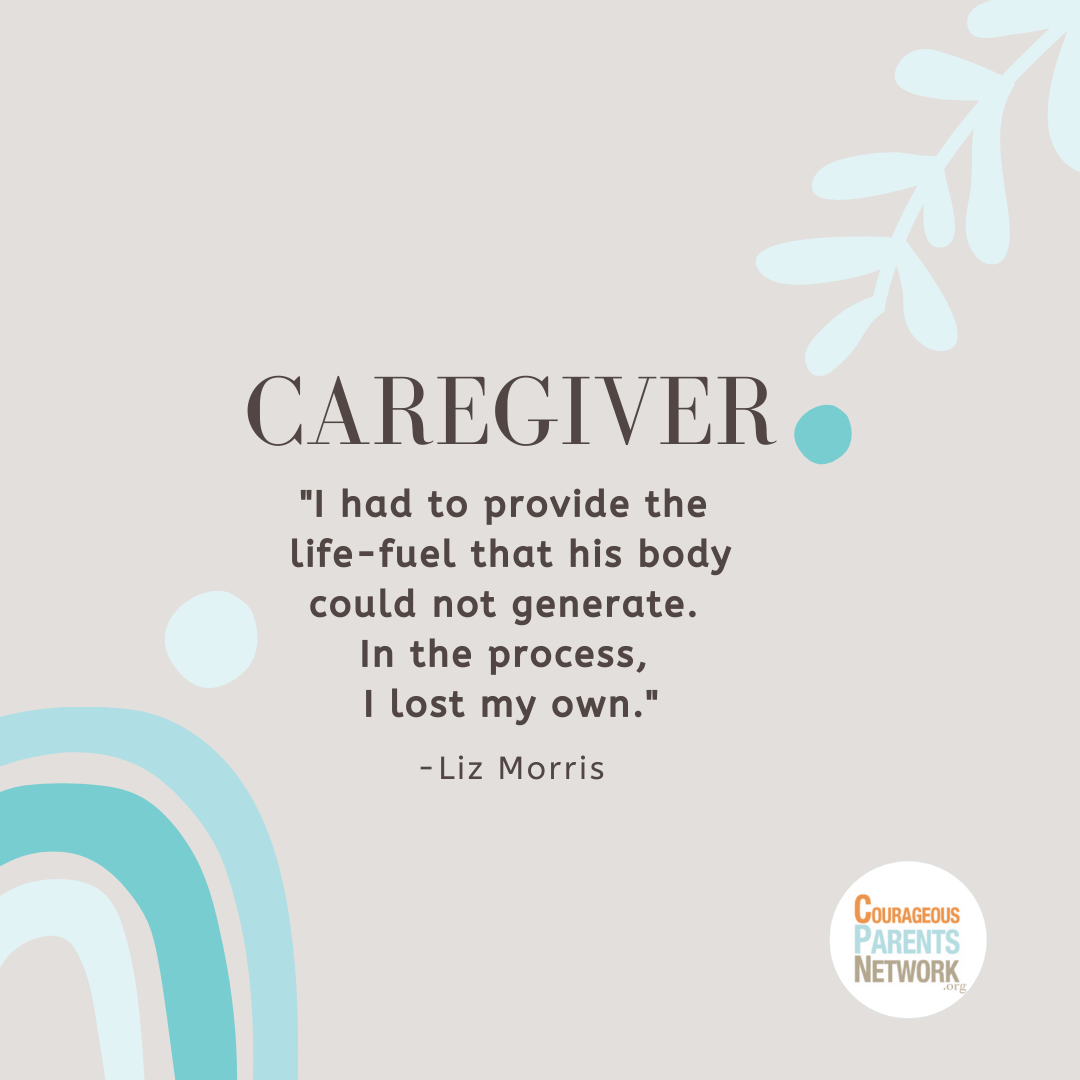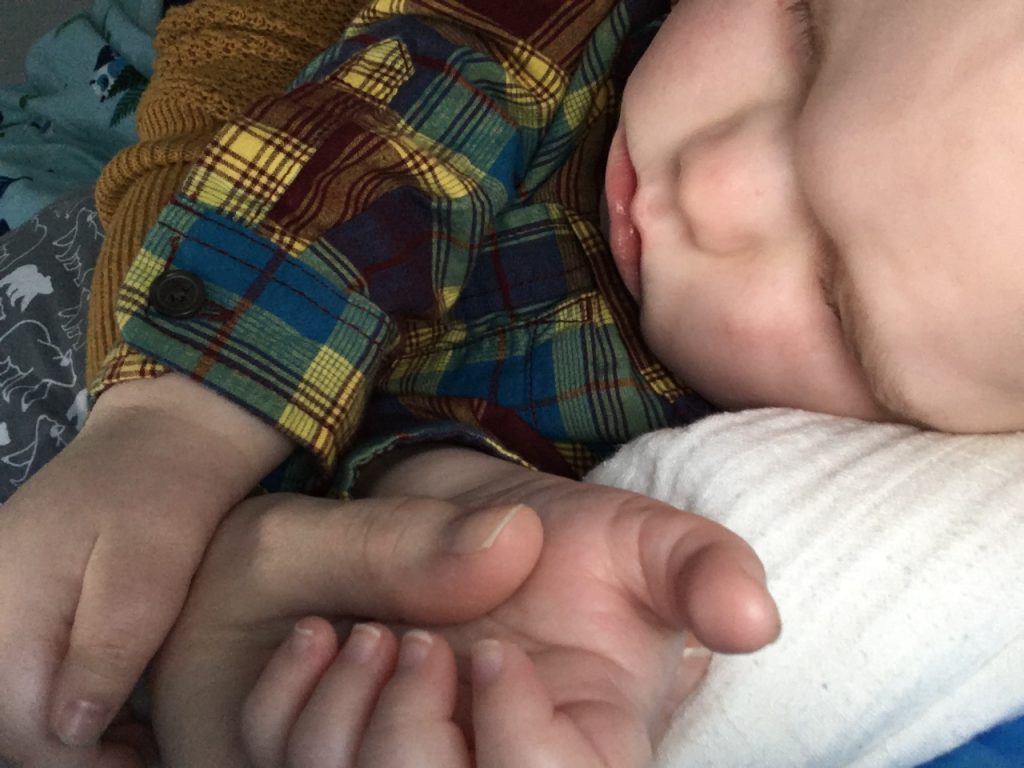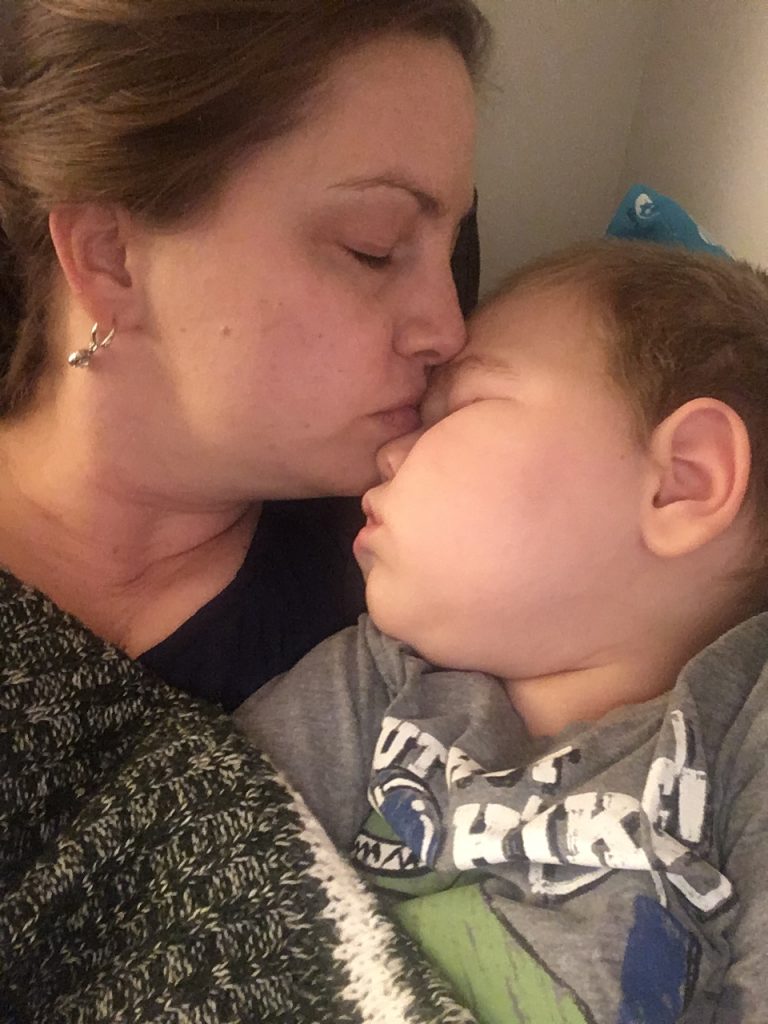4/6/2021
·Enable high contrast reading
Listen to the blog
Caring for the Caregiver

 “This disease is either going to kill him, or it’s going to kill me.” I uttered these exasperated words to my counselor approximately eight weeks before complications of mitochondrial disease did, indeed, kill Colson. It hurts to say out loud, but I had reached a breaking point as his primary caregiver. Too many variables had shifted or expanded or simply come into being that I no longer had the energy to navigate after four intense years.
“This disease is either going to kill him, or it’s going to kill me.” I uttered these exasperated words to my counselor approximately eight weeks before complications of mitochondrial disease did, indeed, kill Colson. It hurts to say out loud, but I had reached a breaking point as his primary caregiver. Too many variables had shifted or expanded or simply come into being that I no longer had the energy to navigate after four intense years.
As Colson grew bigger, his symptoms grew worse. In a perfect world, my stamina as a caregiver would have evolved with him. My back muscles would have gotten stronger to manage the constant lifting; my hips more flexible to withstand the hours of spooning on difficult nights; my head and neck impervious to chronic tension headaches; my weight able to miraculously manage itself with no exercise and a steady diet of whatever is around and fast at all hours of the day and night. But no. As he grew larger and more complex, I ran out of steam and my health suffered.
The 2018 report on Rare Disease Caregiving in America (RDCA) provides a sobering assessment of the impacts on caregivers across 400 rare diseases. The majority of these caregivers provide care for children under 18. Of note, “[r]are caregiving takes a clear toll on the physical health of caregivers, with 30% rating their physical health as fair or poor, and 58% finding it difficult to take care of their own health.”
Over the course of Colson’s brief life, I gained, then lost, then regained forty pounds. I developed non-alcoholic fatty liver disease. I experienced chronic pain that left me in tears in my bathtub. I wore back braces and laid on ice packs and inhaled Ibuprofen and fish oil and melatonin and Prozac like oxygen. The irony that his was an energy-related metabolic disorder was never lost on me. I had to provide the life-fuel that his body could not generate. In the process, I lost my own.
 Even before Colson was born, I was overwhelmed by the sense that I didn’t know where I ended and he began. It’s an eternal, mind boggling conundrum that I believe most parents carry. The heightened symbiosis between a medically complex child and their caregivers accelerates this conundrum: how to ensure the health and wellbeing of the caregiver, in order to ensure the health and wellbeing of the child?
Even before Colson was born, I was overwhelmed by the sense that I didn’t know where I ended and he began. It’s an eternal, mind boggling conundrum that I believe most parents carry. The heightened symbiosis between a medically complex child and their caregivers accelerates this conundrum: how to ensure the health and wellbeing of the caregiver, in order to ensure the health and wellbeing of the child?
It’s an area that needs work. The RDCA study states that “ caregivers may need more support from the doctors and care professionals they interact with. Fewer than half (48%) have had a doctor, nurse, or social worker ask what was needed to provide care to the recipient, and just one in four have had these discussions about their own care needs.”
Palliative care supports the well-being of the family unit, not just the patient, and is therefore an incredible asset in rare-disease caregiving. At about the time my body was raising the white flag of surrender, we had brought on home-based palliative care to reinforce our clinical-based palliative care. These weekly visits provided me with reassurance that there would always be an extra set of medically trained eyes and ears around to help me troubleshoot Colson’s needs and track his baseline. These visits also included a social worker that could help coordinate respite or other services.
While I give myself credit for bringing this support on when we did, it came too late to make the difference I know it could have. I believe my body, often wiser than my overwhelmed brain and always more in tune with my heart, was actually telling me that my caregiving role was coming to an end. That Colson’s life was coming to an end. That we both needed release. I keep telling the void that I would have done it forever. But the truth is, I couldn’t have.
In “Being Mortal,” surgeon and writer Atul Gawande explores end-of-life palliative care benefits for elderly individuals who have experienced relative agency, autonomy, and ability in their day-to-day living. He observes that, “As a person’s end draws near, there comes a moment when responsibility shifts to someone else to decide what to do…[B]ut the arrow of events refuses to follow a steady course and that plays havoc with a surrogate’s mind.”
 I believe that the mental/emotional havoc Gawande references is a chronic state of being for many caregivers, whose children impacted by rare disease may not have the agency, autonomy, or ability to make their wishes known. This compounds whatever physical challenges a caregiver may also experience. Palliative care providers can and must create space for caregivers to acknowledge the havoc and the hurt in their role. They can encourage other providers on the care team to do so as well. In addressing the health of the caregiver (and encouraging them that their needs are valid), providers can ultimately optimize care for the child – the very worthy and very difficult endeavor parents and providers alike dedicate their lives to.
I believe that the mental/emotional havoc Gawande references is a chronic state of being for many caregivers, whose children impacted by rare disease may not have the agency, autonomy, or ability to make their wishes known. This compounds whatever physical challenges a caregiver may also experience. Palliative care providers can and must create space for caregivers to acknowledge the havoc and the hurt in their role. They can encourage other providers on the care team to do so as well. In addressing the health of the caregiver (and encouraging them that their needs are valid), providers can ultimately optimize care for the child – the very worthy and very difficult endeavor parents and providers alike dedicate their lives to.
Liz Morris loves exploring complex questions. Her professional experiences in project management, librarianship, and community development prepared her well for her favorite role as mom to Colson. Colson, impacted by mitochondrial disease since birth, inspired Liz to face the complicated aspects of his life through writing and advocacy. Liz serves as a family advisor at Seattle Children’s Hospital, and is a volunteer ambassador for the United Mitochondrial Disease Foundation. She is committed to helping families find the information they need to help them live well in the face of life-limiting illness. You can find Liz on Instagram @mrsliz.morris





